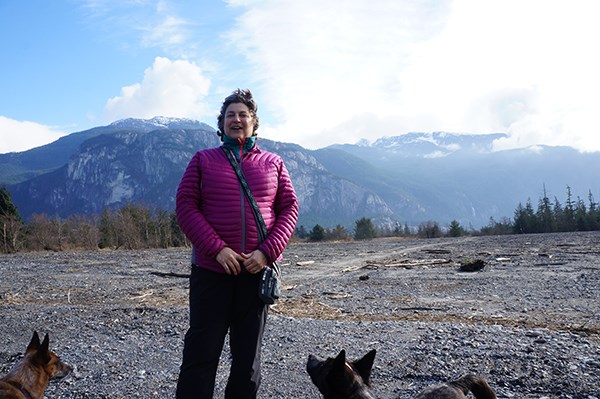There will soon be trucks and machinery in the Squamish Estuary, but not to worry, it isn’t big industry in there.
Part of the estuary will be blocked off for about six months, preventing the many bikers, hikers, birders and dog walkers from accessing some of the trails starting the first week in March.
While it may look like damage is being done to the area northwest of the Squamish Terminals, it will in fact be conservationists cleaning up what years of industry did within the estuary.
The Squamish River Watershed Society (SRWS) is beginning restoration work on the former west-bar log sort area in the estuary starting next week.
The forestry company had officially pulled out and finished its cleanup obligations in October, according to Tobe.
The log sort was moved to the far side of the Mamquam Blind Channel.
“We want to go in and restore the whole area to natural estuary,” said Edith Tobe, executive director of the SRWS, during an interview on the former log sort lands on Friday.
Currently, the site looks a bit like a moonscape – a built-up, large swath of gravel and rock with no sign of plant or animal life on it. “We are getting rid of the impermeable surfaces – it is like asphalt – to allow infiltration so that the estuary, which works like giant lungs, can function as an estuary: protect against sea level rise, storm surges and floods,” said Tobe.
The society will bring the area to the same elevation and appearance as the surrounding estuary and also connect the walking trail on the east side of the estuary to the South Loop trail.
Tobe said, for safety reasons, people won’t be able to come through the site while the work is underway.
Within five years of the work, it will be impossible to tell the log sort was ever there, she said. “You will never know it was this moonscape.”
Estuaries are made up of salt marshes, mudflats, rocky intertidal shore, sea grass beds, tidal stream ecosystems and barrier beach habitats.
Since 2007, about 70 per cent of the Squamish River Estuary has been designated a Wildlife Management Area under the Provincial Wildlife Act.
The society is working with the province, the district, Fisheries and Oceans Canada and the Squamish Nation on the restoration project.
The SRWS received about $150,000 from the National Wetland Conservation Fund and Pacific Salmon Foundation for the project. Tobe is also currently applying for funding to deactivate the former road that leads to the old log sort site and create a pedestrian-only access trail.



